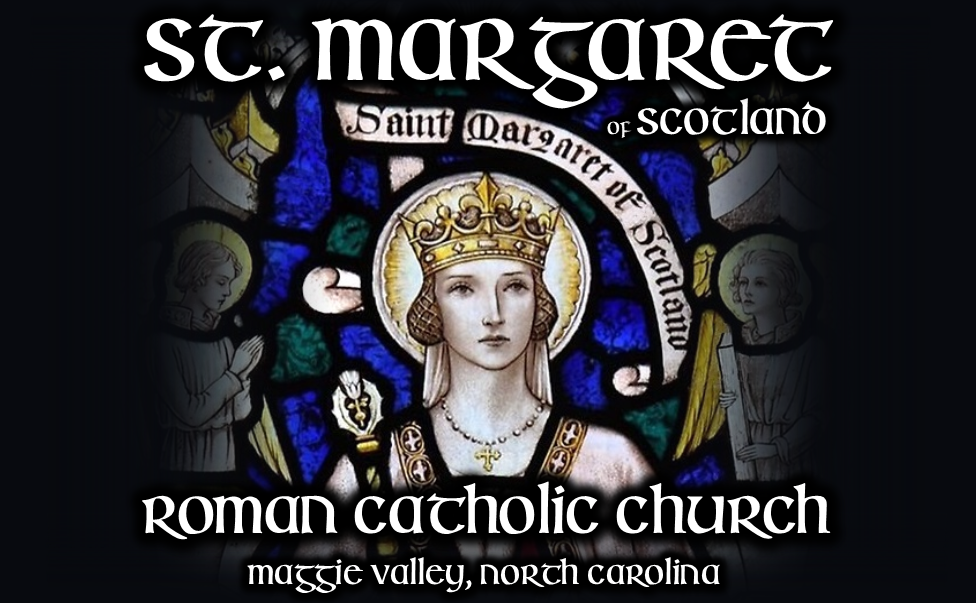About St. Margaret
|
Saint Margaret Queen of Scots Born 1045, Castle Réka, Mecseknádasd, in the region of Southern Transdanubia, Hungary Died 16 November 1093 (aged c. 48), St Margaret's Chapel in Edinburgh Castle, Midlothian, Scotland Venerated in Roman Catholic Church; Anglican Communion Canonized 1250 by Pope Innocent IV Major shrine Dunfermline Abbey Feast November 16; June 10 (Extraordinary form of the Roman Rite) Attributes reading, care for the poor, church reform Patronage Dunfermline; Scotland; The Queen's Ferry; Anglo-Scottish relations |
St. Margaret of Scotland was born around the year 1045 and died on 16 November 1093. She was a daughter of Edward "Outremere" (or "the Exile") and Agatha, kinswoman of Gisela (the wife of St. Stephen of Hungary). St. Margaret was the granddaughter of Edmund Ironside. A constant tradition asserts that Margaret's father and his brother Edmund were sent to Hungary for safety reasons during the reign of Canute; but, no actual record of this has ever surfaced. The date of Margaret's birth cannot be ascertained with accuracy; but, it must have been between the years 1038 (when St. Stephen died) and 1057 (when her father returned to England). It appears that Margaret came with him on that occasion and, upon his death and the conquest of England by the Normans, her mother Agatha decided to return to the Continent. A storm, however, drove their ship to Scotland, where Malcolm III received the party under his protection, subsequently taking Margaret as his wife. This event had been delayed for a while by Margaret's desire to become a religious. In her position as queen, all of Margaret's great influence was thrown into the cause of religion and piety. A synod was held, and among the special reforms instituted, the most important were the regulation of the Lenten fast, observance of the Easter communion, and the removal of certain abuses concerning marriage within the prohibited degrees. Her private life was given up to constant prayer and practices of piety. She founded several churches, including the Abbey of Dunfermline, built to enshrine her greatest treasure, a relic of the true Cross. According to legend, she had a Book of the Gospels (richly adorned with jewels) which was accidentally dropped into a river; but, later, miraculously recovered. It is now in the Bodleian library at Oxford. She foretold the day of her death and her body was buried before the high altar at Dunfermline. In 1250, Margaret was canonized by Innocent IV and her relics were relocated to a new shrine, the base of which is still visible beyond the modern east wall of the restored church. During the Reformation, her head came into the possession of Mary Queen of Scots and later was secured by the Jesuits at Douai, where it is believed to have been lost during the French Revolution. The rest of her relics (together with those of Malcolm) were acquired by Philip II of Spain. St. Margaret's Feast Day is 16 November (the date she died). |

